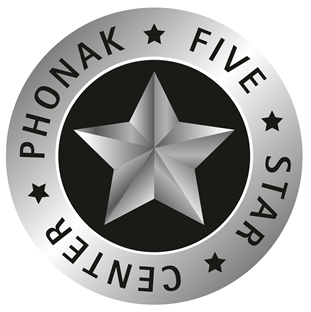
Hearing aids may be recommended if you have a hearing loss that is not medically treatable. The audiologist will discuss the different types of hearing aid options that are appropriate for your hearing loss and lifestyle.
Hearing aids are programmed to your specific hearing loss. Some hearing aids are more advanced than others, allowing for greater flexibility and adaptability for different types of listening environments.
In most cases if there is hearing loss in both ears, hearing aids for both ears are recommended. Benefits of hearing with both ears include better ability to hear sound from all directions, better ability to locate the direction of sounds, and better ability to listen in noisy conditions.
It takes some time to adjust to using hearing aids. Most people have hearing loss for a number of years before they start using hearing aids. The ears and brain need time to adjust to listening to sounds that have not been heard for however long the hearing loss has been present. The audiologist will help to make your adjustment as smooth as possible by adjusting the hearing aid settings as needed and through counseling and education on hearing loss and hearing aids.

All manufacturers offer a full range of products. During your hearing aid consultation, the audiologist will help you determine which manufacturer, hearing aid style and technology level will best fit your hearing loss and lifestyle needs. Other options, such as rechargeable hearing aid batteries and hearing instrument accessories can be discussed, as well.
Basic - for those with a quiet lifestyle who want to hear TV better and have occasional outings to restaurants and stores.
Mid-level - for those with an active lifestyle that spend time frequently in noisy environments, such as restaurants, movie theaters, etc.
Premium level - for those with a very active lifestyle in a variety of challenging environments, such as restaurants, meetings, large reverberant rooms (gymnasium, church, etc). Additional features to help with difficulties associated with hearing in noise, reverberation and windy conditions.
Most hearing aids have bluetooth technology that allows streaming of phone calls, TV programming, and music wirelessly to hearing aids. In some cases, additional accessories are needed to use this feature.
Traditional hearing aid that is appropriate for mild to profound hearing loss. The hearing aid rests behind the ear and is fitted with custom earmold (or a non-custom ear tip for milder losses).
Similar to the behind the ear style of hearing aid, except the receiver (speaker) sits in the ear canal covered by a custom earmold or ear tip
Custom made instrument that fits in the ear with nothing sitting behind the ear. There is also a non-custom version.
Hearing device that is appropriate for persons with single-sided deafness, or hearing loss in both ears, when the worse ear would not benefit from amplification.
Sound signals are sent to a custom lens to gently vibrate the eardrum instead of relying on speakers to amplify sound. This allows for amplification across a broader range of frequencies, which is important for speech understanding and sound quality. It is appropriate for individuals 18 and older who do not have middle ear problems. The Earlens requires an ENT physician and an audiologist in the fitting process.
Learn more about Earlens
Bone anchored (osseointegrated) devices, such as BAHA and Osia are appropriate for people who might not be able to use traditional hearing aids due to conditions such as single-sided deafness, conductive hearing loss, or mixed hearing loss. Learn more: Cochlear™ Baha® System | Bone Conduction Hearing Device | Cochlear™ Osia® System | Sound & Speech Processor | Cochlear
A cochlear implant is a device which is surgically implanted into the inner ear. It is appropriate for people with moderate to profound sensori-neural hearing loss who do not receive adequate benefit from traditional hearing aids. Candidacy is determined following a cochlear implant evaluation with the audiologist and a consultation with the surgeon. Learn more about cochlear implants:
Cochlear™ Nucleus® Hearing System | Advanced Bionics | The Cochlear Implant Technology Innovation Leader